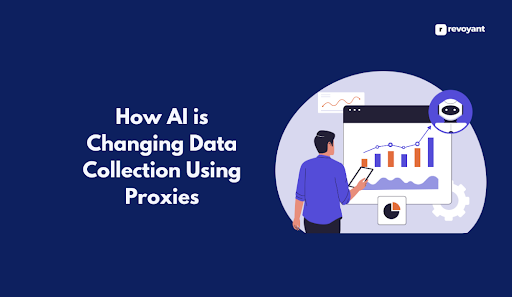Many people want to turn text-based chatbots into voice agents, but it can be tough. The process often feels confusing and slow. Retell AI makes things much easier by using an API that turns language models into speaking agents.
With just a few steps, you can help your systems talk like real people. Keep reading if you want your AI to speak as smoothly as it types.
Key Takeaways
- Retell AI uses an API to turn text into speech, making chatbots sound like real people.
- The tool works with Large Language Models to listen and answer in a human-like way.
- Voice agents handle tasks such as booking appointments with ease and talk clearly.
- Personal touches, like using names, make calls feel more friendly and personal.
- Calls end politely, showing good customer service from voice agents.
Retell AI: Transforming Language Models
I use Retell AI to turn text models into engaging voice agents, fast. This tool makes language models speak and listen, giving users a smooth way to build voice solutions for real-world needs.
API designed for Large Language Models (LLMs)
Retell AI offers an API designed for Large Language Models, or LLMs. This application programming interface lets advanced language models work as voice assistants. I see how it uses natural language processing and speech recognition, letting these models talk in a clear human-like way.
With this tool, machine learning meets text-to-speech technology to create smooth conversations.
The API makes large language models act like real conversational agents. They can answer questions easily and handle tasks such as scheduling calls or giving directions. Each interaction sounds personal; that is the strength of true conversational AI.
Many companies now use Retell AI’s solution to provide next-level customer support with their own voice bots powered by strong language generation skills.
Voice agents for human-like interactions
After setting up the API for Large Language Models, I see how voice agents can start to change things. These voice agents use natural language understanding and speech recognition to talk in ways that sound real.
The system listens, understands questions, and gives answers like a person would. Voice agents greet callers using polite greetings, ask how they can help, and even remember details as we speak.
I notice these agents do more than just simple tasks. They create a conversation interface that feels smooth. For example, someone may call about an appointment; the agent responds quickly and offers options without delay or confusion.
Each response shows advanced automated communication by keeping the chat clear and helpful at every step. Because of this advanced human-computer interaction skill set, people feel comfortable talking with virtual assistants powered by large language models through Retell AI’s solution.
Dialogue Showcase: Retell AI in Action
You can see how Retell AI makes conversations smoother, sounding more like real speech. Watch as the voice agent handles calls with clear and friendly responses, making every step simple for users.
Greeting and assistance inquiry
I start the conversation as a virtual assistant. I greet the caller and offer help right away, using simple words to sound clear. The caller gives her name, Rose, and shares her need for support.
She asks me to book an annual dental exam for her; this is a regular teeth checkup appointment she needs every year.
Rose feels welcome during this exchange since I speak in a warm tone and address her by name. My reply stays polite and efficient at each step. I make sure that my greeting sounds friendly while showing AI in operation with real dialogue examples such as “Hello! How can I assist you today?” This way, Rose knows she is heard from the very first moment of our call together.
Personalized interaction with caller
I ask Rose if she has visited the dental office before. She says yes and gives her name. This step helps me give a personalized customer interaction. Caller engagement gets better because I use details from their previous customer visit.
Caller identification matters in every conversation. If I know the caller’s name, I can offer individualized communication and customized dialogue. Every time Rose calls, I confirm prior visits and respond with specific conversation to her needs or questions about appointments or services.
Scheduling appointment with flexibility
After building a personal connection with the caller, I shift the conversation to booking appointments. Rose asks for an 8:00 a.m. slot on Monday, which gives me a clear starting point.
The agent checks availability and offers times between 8:00 a.m. and 5:00 p.m., Monday through Friday. This wide range of time slots helps make scheduling flexible for callers.
I ask if Rose wants her requested time or prefers another slot during these hours. If she needs to reschedule later or change her mind, I can adjust appointment times without hassle.
If one option does not work, I quickly suggest other available openings so meetings fit any busy calendar with ease. My goal is simple: offer flexibility in setting up meetings and handle requests swiftly, no matter how packed the week may look.
Polite and efficient interaction
Rose called to change her appointment. She asked to move it to Tuesday at 9:00 a.m., and the voice agent quickly found an open slot. The conversation stayed friendly, clear, and respectful from start to finish.
Both Rose and the agent thanked each other before ending the call.
Courteous and effective communication stood out in this dialogue. I noticed that adjusting the appointment time was smooth since both parties listened well. Grateful words made for a positive, efficient interaction and showed what good customer service can look like with advanced technology.
Now I will talk about how these agents close calls with care and respect for every caller’s needs.
Conclusion
Retell AI’s API makes it easy to turn language models into real voice agents. I see how these tools create smooth and helpful phone conversations. Voice AI now helps people talk with businesses, book appointments, and get answers faster than ever before.
With solutions like this, making voice-enabled applications feels simple and quick for anyone working with conversational AI technology.
FAQs
1. What is an API solution for language models?
An API solution for language models is a system that allows you to transform your pre-existing language models into conversational voice agents instantly.
2. How does this transformation work, exactly?
This transformation works by using the API to convert text-based language models into voice-enabled agents. These agents can then carry out tasks and interact with users in real-time, just like humans would do.
3. Can these voice agents understand and respond effectively to user queries?
Yes, indeed! The transformed voice agents are highly intelligent and capable of understanding complex commands or inquiries from users. They can provide accurate responses based on their programming and learned experiences.
4. Are there any limitations to what these conversational voice agents can do?
While these conversational voice agents are incredibly versatile, they aren’t without limitations. Their effectiveness depends largely on the quality of the original language model and how well it has been trained; however, with proper setup and training, they prove to be exceptional tools in enhancing user experience.




